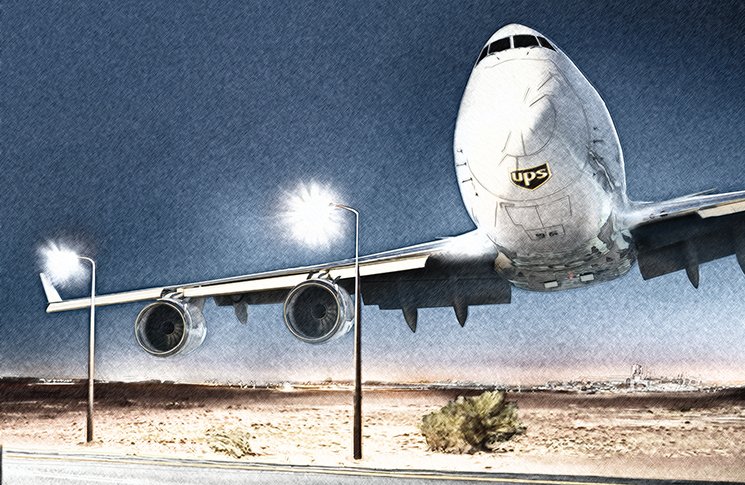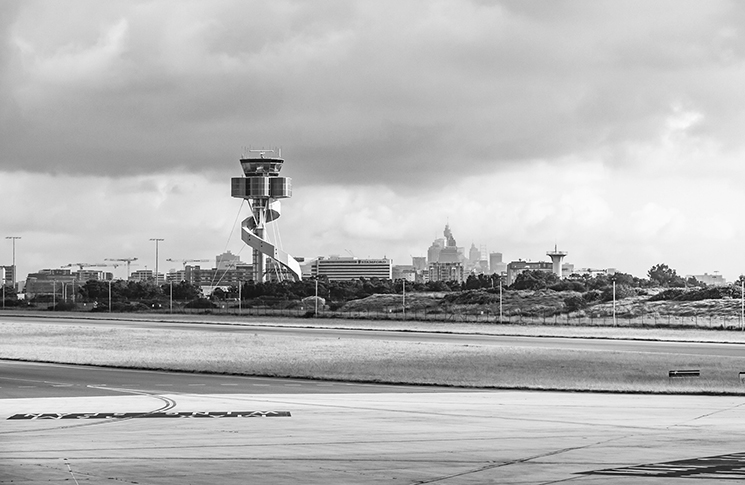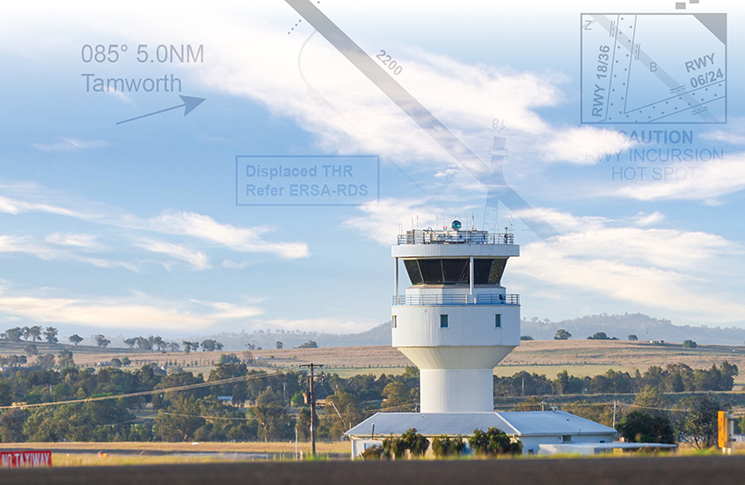The virtuoso pilot says natural talent or even thousands of hours are no substitute for knowledge, practice and discipline
If aviation were music, Matt Hall would be a Paganini—or a Jimi Hendrix. The son and grandson of pilots, he flew the F/A-18 Hornet for the RAAF, graduating as dux of his course, and becoming a fighter combat instructor. He also spent three years on exchange with the US Air Force flying the formidable F-15 Eagle. He resigned from the military, not to follow the time-honoured path of airline flying, but to become a pilot in the Red Bull Air Race series. As Australia’s only full-time air racing pilot he pushes a Zivko Edge 540 around a pylon course, pulling momentary loads of up to 12 G.
You might think such an expert would place a high value on the skill he demonstrates at the highest level. But Hall says his given talent is nowhere near enough in itself to make him a safe pilot. He nominates occasions where reliance on his skill has almost killed him. To his great credit he has analysed and learned from these incidents. We can too.
The first occasion was when he was flying the F/A-18 in a ground attack gunnery exercise. ‘As I rolled in, I became very focused on doing the best pass possible,’ Hall remembers. ‘I put all of my attention into the pipper and the ranging ring on the head-up display. Unfortunately, the display was providing some incorrect range information which I did not notice. I didn’t see the ground starting to come up, I didn’t see the recovery marker, a road, go behind me. I didn’t see all those because I was focused on the target.
‘I pulled the trigger and luckily for me there was only one round left—it fired, and the gun stopped. When that happened, I popped out of my absolute focus and realised I was about to hit the ground. I did a maximum G recovery and missed the ground by 14 feet. The tail went between the poles holding the strafe flags. If there had been one more round in that gun, I’m certain I would have killed myself. I had lost situational awareness because all my focus got dragged to one point and I missed all the external cues saying I was going to crash the aircraft.’
The second occasion was in 2010, his second season as a race pilot. While qualifying for the first session of the Windsor, Ontario Red Bull Air Race in Canada, his plane touched the water of the Detroit River after an accelerated stall during turning. Hall recovered and landed the aircraft with superficial damage mainly to the right aileron.
Hall says the roots of that accident were mental and ultimately organisational. ‘When I crashed a plane in 2010 in the Red Bull Air Race it came down to a mental health problem. I was not engaged fully in what I was doing as a pilot. I was focused more on running the business, managing my employees—and then I got in an aircraft, flew at 12 G and 30 feet and hit the water.’
‘My mental health was not good enough. I was not engaged in that flight and did not recognise the danger I was in.’
Hall nominates four aspects of piloting—planning, awareness, fitness and knowledge—which he says are as least as important as natural-born stick-and-rudder talent for pilots who plan to grow old.
Flight planning
‘There’s nothing natural about flight planning,’ Hall says ‘It’s something you have to learn; how to read maps, calculate weight and balance, how to use airspace correctly, where the diverts are, what the procedures are for your aircraft. That sort of stuff doesn’t come with the gift of good balance and good eyesight. It’s something you must study and learn, through preparation and practice.’
Hall’s definition of flight planning involves much more than getting out the charts and calculators. Planning for aerobatic flight involves intense visualisation of the manoeuvres and hazards involved and Hall says this technique, of imagining a flight and its critical points as though it were a movie or computer game, is valid for any pilot.
‘I really embraced visualisation early in my military career. In the air force, you can’t just go and book another hour to get your licence. If you don’t get it quickly, you can’t be a pilot. So, it was very important for me to get the maximum out of every hour.’
Visualisation allows planning in detail, Hall says. ‘I used to visualise changing a radio frequency, where my hand would be, which knob and how it rotated, through how many clicks to change the frequency. That’s the detail you should go into with visualisation so when you’re actually in the aircraft and it’s a busy moment, cleaning up and setting the power, when you get the “contact departures” call from ATC you don’t have to ask yourself where the radio is and how you set it.’
‘If you can polish those little acts through a whole flight you move closer to the ultimate aspirational goal of the perfect flight.’
‘The effects of visualisation can be greater than the effects of physical practise because with visualisation you can focus on what you need to improve. When you’re doing circuits you only get four to five goes at landing every hour. Visualising you can do 100 flares to touchdown in 10 minutes. You visualise before going to bed, sleep on it and wake up a better pilot.’
‘It really is a form of virtual reality. When I’m doing top-end visualisation my heart rate goes up, I sweat. When I’m visualising pulling G my blood pressure goes up and my body responds to the visualisation because it’s getting all the cues. It’s that powerful.’
Situational awareness
Situational awareness can be defined in many ways, as the combination of preparation, practice and rehearsal, or as an awareness of the flight in four dimensions—everything that has happened, everything that is happening now, and everything that might happen in the future that would be undesirable to the flight. But Hall prefers to think of it as a bucket.
‘I think of my brain as like a bucket,’ he says. ‘The more room I have in the bucket the more situational information I can take in. But everyone’s bucket has an overflow point where you are no longer taking in information and your situational awareness is dropping rapidly. Something important may be happening that you are not taking onboard.’
‘The best situational awareness comes from keeping your mental bucket as empty as possible and the way to do that is to pre-visualise everything that could happen on the flight in order to reduce the amount of thinking you have to do on your feet. When you have to ask yourself, “I wonder what that is?”, your bucket is starting to fill up.’
‘It’s something you need to develop by understanding what your threats are, being able to predict their arrival, being able to recognise the warning signs, and pre-planning what your response will be.’
Like flight planning, aviation-level situational awareness is a skill that nobody is born with. ‘Some people are better at developing it, but you don’t see it in babies,’ Hall says. ‘They’re like “there’s a threat, I’m going to check it out and get clobbered by it.” ’
Fitness, body and mind
At 47, Hall is an active and compact man who notes and controls what he eats and drinks. Since his air force days, he has associated physical fitness with fitness to fly.
‘In the Red Bull Air Race, we’re pulling up to 12 G on the race track and flying as low as 30 ft AGL and flying within centimetres of objects. We need to make sure our bodies are prepared for that environment. I can’t have a sore neck or a sore back or a cold or dehydration and have my G-tolerance down. I need to be ready for every flight.’
He says the same applies to everybody who flies an aircraft. ‘When you’re flying and you start to feel unwell, you can’t just pull over. You have to land before you can give yourself the luxury of feeling ill.’
Hall says fitness is more than just physical. ‘Mental health is just as important and just as much an open topic for me as physical health. It doesn’t mean you have a disease or a diagnosable issue.’
‘Mental health is how well your brain is prepared to fly safely. If you are about to fly and thinking, “I’ve done this thousands of times. I don’t need to sit down and get ready,” from an aviation standpoint that’s poor mental health.’
His 2010 close call was a valuable lesson in the importance of removing external distractions and pressures. ‘What we’ve done since that accident is change the pre-flight arrangements. Now when I’m about to fly an aircraft I am a pilot and nothing else. Not a CEO or a brand ambassador.’
Emotional health is an important part of mental health, Hall says. ‘It is something you don’t realise is sitting down there until an event pops up. You need to be aware of emotional factors that could affect your judgement: “How is my family, has someone I know died recently?” These stresses can come back to you in the air.’
Emotional health is particularly important with racing. ‘I might be physically fit and mentally focused but as soon as I have a desire to win the race, my emotions can displace my good judgement,’ Hall says.
‘We’re combining racing and aviation at low level. It’s got potential for disaster written all over it. We have to be very clear in our minds every time we strap into the cockpit as a race pilot that I am a pilot. My primary goal is to fly the aircraft safely, not win the race. That takes a lot of rehearsal and maturity to avoid hanging it all out just to win the race.’
While most other pilots do not race (hopefully none!), they can face similar emotional pressure when weather and the desire to reach a destination collide. ‘When you’re away and want to get home is when emotions can take control,’ Hall says.
Learning
Matt Hall discovered the danger of complacency the day he found himself looking at the scenery when flying an F/A-18. His reverie ended in a moment of shocked realisation at how disengaged he had been and that was the beginning of the end of his military career.
Complacency may seem an irresistible force, but it crumbles before education, Hall says. ‘The only way to combat complacency is to continue to challenge yourself. You should always strive to continue to learn, to attain an additional rating, IFR, tailwheel, multi-engine, whatever. Pushing yourself will keep you humble, which is the first part of avoiding complacency. If you think you’re the ace-from-aerospace and can do anything in an aircraft, you’ll be one of those bold pilots who’s not going to get old.’
Learning from the experience of others is vital to building situational awareness, he says. Again, imaginative visualisation is the key.
‘You can’t go out and create deliberate emergencies, so the way to do it is by reading about others’ misfortunes. How to perform well and combining that reading into visualisation so that when you get airborne your mental bucket is emptier and you are able to take information on board.’
‘You can read a checklist or a safety report of an incident. But until you combine those two items in your brain it’s still just somebody else’s experience. Visualisation allows you to use your imagination to develop an emergency procedure in the cockpit based on somebody else’s experience. If one day something similar does happen, you’ve already been there in your mind.’
The fifth element: enjoyment
Hall is anxious to emphasise that safe flying is fun. He plans, visualises and trains because he prefers to do his worrying, imagining and suffering on the ground, not in the air.
‘All of this sounds a bit doom and gloom, but I have the most fun in an aircraft when I take off with a clear mind knowing exactly what I have to do and that there’s nothing I don’t know about that’s going to come out of left field and get me,’ he says. ‘I’m not worried about what might happen. No matter what it might be, I’ve thought it through and I’ve got a plan to deal with it.’











Some excellent learning points for HF students. I hope Matt doesn’t mind if I quote him next time I’m teaching.
Great read. Matt, could you take us through the stall, incipient spin and recovery action you took in 2010? Looks like the bottom wing stalled first, did you then push the nose down, which broke the stall and did that then give you aileron authority to roll wings level?